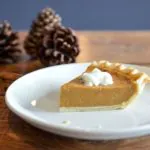Get The Most Out of Your Rhubarb from Backyard Eats
Harvesting Rhubarb
When It’s Ready
- Regularly check the growth of your rhubarb plants. They typically become ready for harvest when the stalks are thick and reach a length of about 12-18 inches.
- Harvest rhubarb stalks when they are firm and have a vibrant color, such as deep red or bright pink, depending on the variety. Avoid harvesting stalks that are thin or green, as they may be underdeveloped.
- Rhubarb is typically ready for harvest in late spring to early summer, depending on your location and the climate. Harvest stalks when they reach maturity, usually after the plant has been growing for at least two to three years.
- Spring through early summer, typically from April to June
How To
- Use a sharp knife to cut rhubarb stalks at the base, near ground level. Pulling or twisting the stalks may damage the plant.
- Leave a few stalks on the plant to continue photosynthesis and support future growth.
- It’s best to harvest rhubarb in the morning when the stalks are crisp and full of moisture. Avoid harvesting during hot weather, as the stalks may become limp and less flavorful.
About Rhubarb
Rhubarb is an herbaceous plant that grows 1-4 ft tall. It requires partial to full sun to thrive, but not require protection or pruning throughout the season.
Flowering/Fruiting Tendencies
Rhubarb is a broad leafed plant. The stalk is edible when baked or cooked – but the leaves can be poisonous to humans and animals. Rhubarb will survive for a long time once established. It should be in the ground for a few years before harvesting, or until the stalks become at least 1″ wide.
Design Notes
Rhubarb is sometimes difficult to establish because it doesn’t love the heat. For best success, keep watered thoroughly and space plants 24″ apart.
Care Notes
Rhubarb needs minimal care from year to year. Once established rhubarb can be very long-lived. Its biggest threat is heat.
Newly planted perennials require some additional care to help establish and support the plants as they grow. Water newly planted perennials deeply at the root 2-3 times a week during the first growing season. Apply compost and wood chip mulch in the late winter/early spring.
Storing Rhubarb
After harvesting, remove any leaves, as they are toxic, and discard them. Store the rhubarb stalks in the refrigerator for up to a week. For longer-term storage, rhubarb can be frozen after blanching.

Cooking With Rhubarb
- Rhubarb Compote: Simmer chopped rhubarb with sugar and a splash of water until softened, then serve warm or chilled over yogurt, ice cream, or oatmeal.
- Rhubarb Crisp: Combine sliced rhubarb with sugar and a touch of cinnamon, then top with a crumbly mixture of oats, flour, butter, and brown sugar. Bake until bubbly and golden brown for a delicious dessert.
- Rhubarb Jam: Cook rhubarb with sugar and lemon juice until thickened to create a tangy and sweet jam that pairs well with toast, scones, or as a filling for thumbprint cookies.
- Rhubarb Pie: Fill a pie crust with a mixture of sliced rhubarb, sugar, and a bit of flour or cornstarch to thicken. Top with another crust or a lattice pattern and bake until the filling is bubbly and the crust is golden brown.
- Rhubarb Sauce: Blend cooked rhubarb with sugar and a splash of orange juice for a versatile sauce that can be used as a topping for pancakes, waffles, or grilled meats like pork or chicken.
- Rhubarb Chutney: Combine chopped rhubarb with onions, vinegar, brown sugar, and spices like ginger and cloves to make a flavorful chutney that pairs well with cheese, crackers, or grilled vegetables.
- Rhubarb Syrup: Simmer rhubarb with sugar and water until syrupy, then strain and cool. Use the syrup to sweeten cocktails, lemonade, or sparkling water for a refreshing beverage.
- Rhubarb Salsa: Mix diced rhubarb with tomatoes, onions, jalapeños, cilantro, lime juice, and a pinch of salt for a unique twist on traditional salsa. Serve with tortilla chips or grilled fish or chicken.
- Rhubarb Muffins: Fold chopped rhubarb into your favorite muffin batter for a tart and sweet breakfast treat. Top with a streusel topping for added crunch.
- Rhubarb Sorbet: Puree cooked rhubarb with sugar syrup and lemon juice, then churn in an ice cream maker until frozen. Serve the refreshing sorbet on its own or as a palate cleanser between courses.




